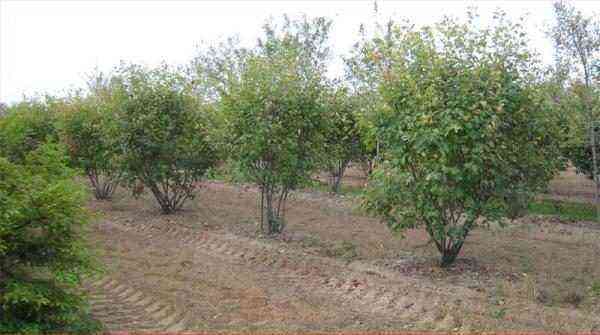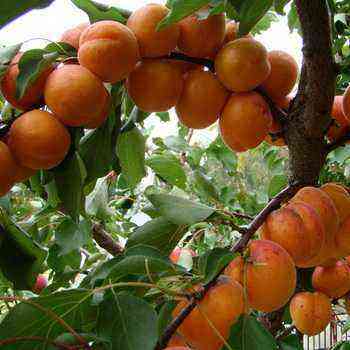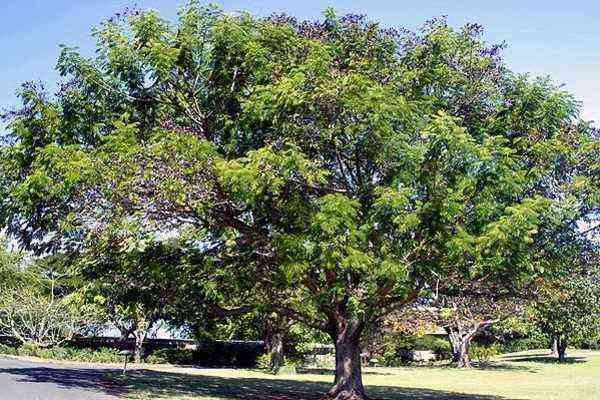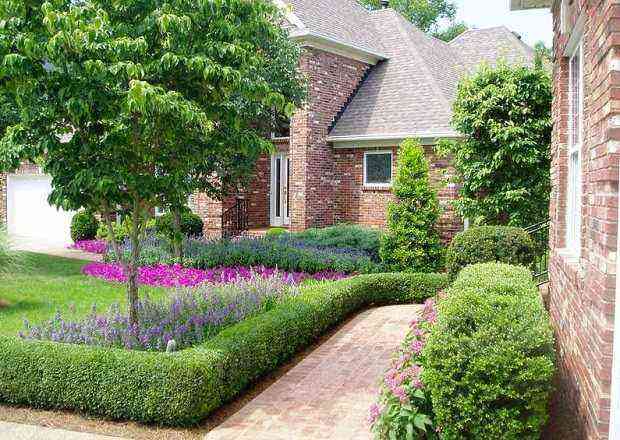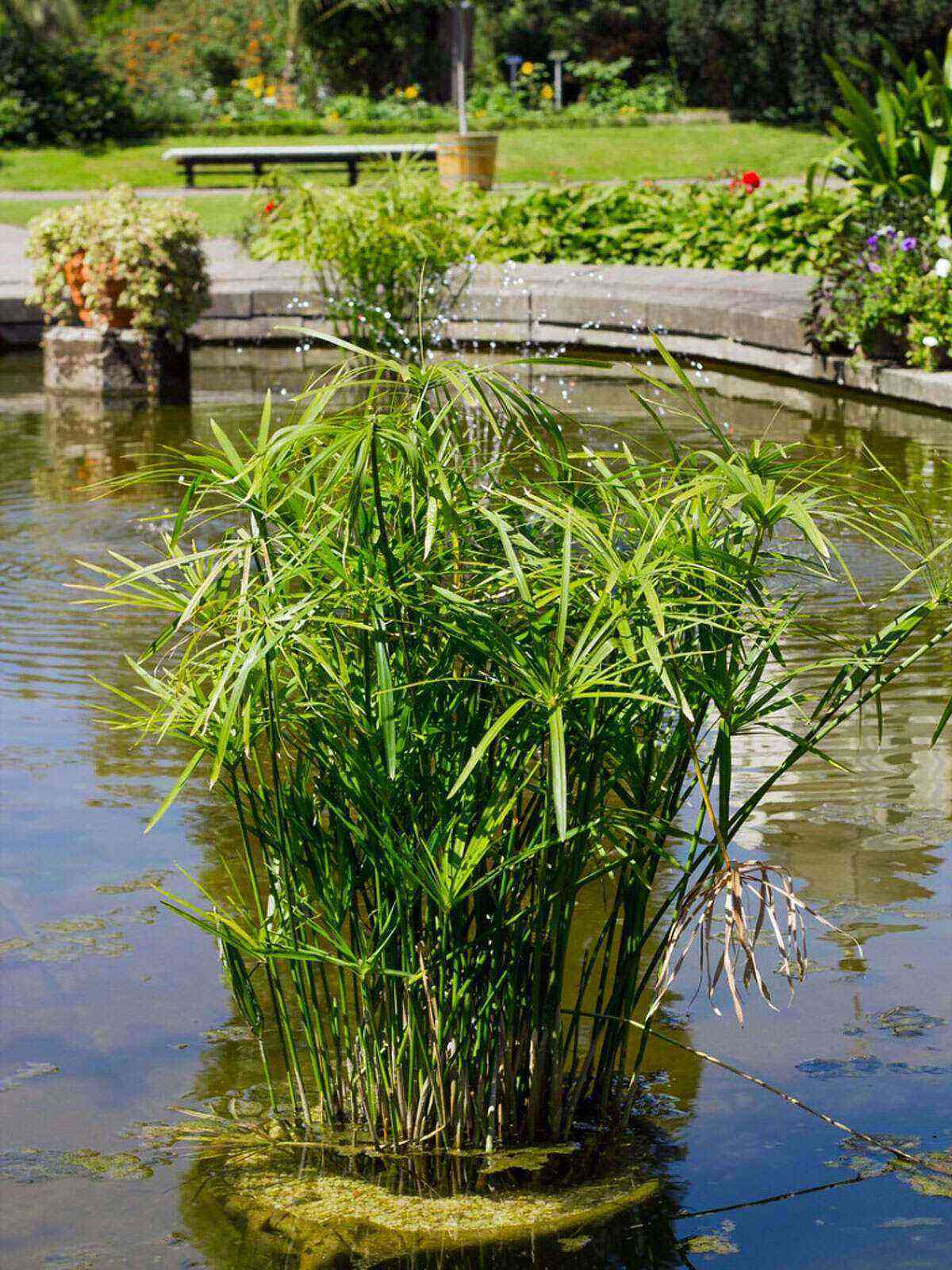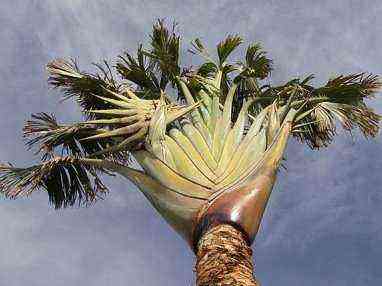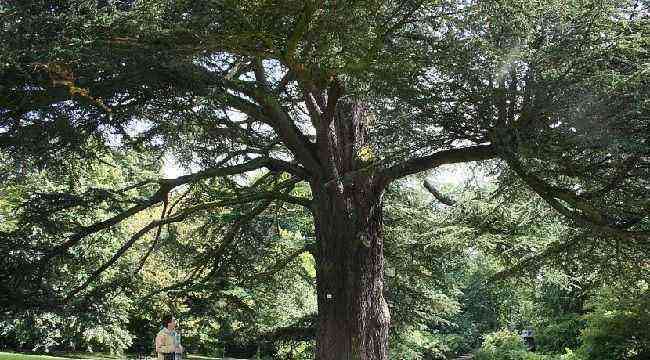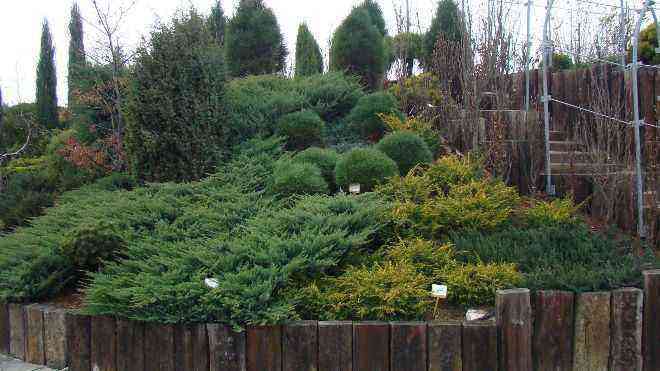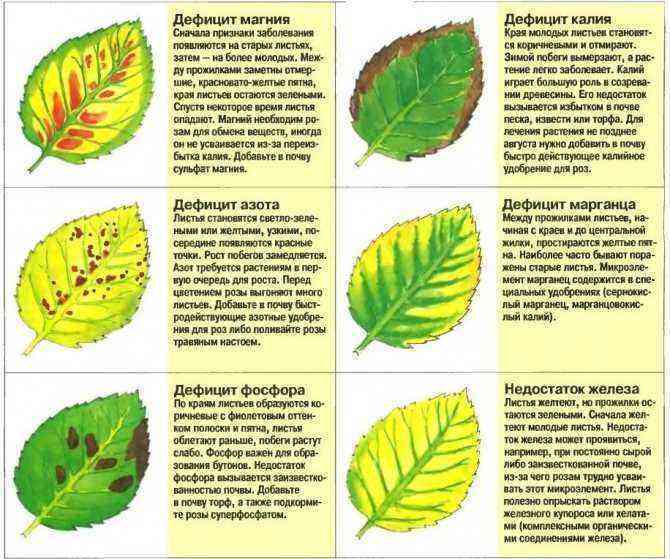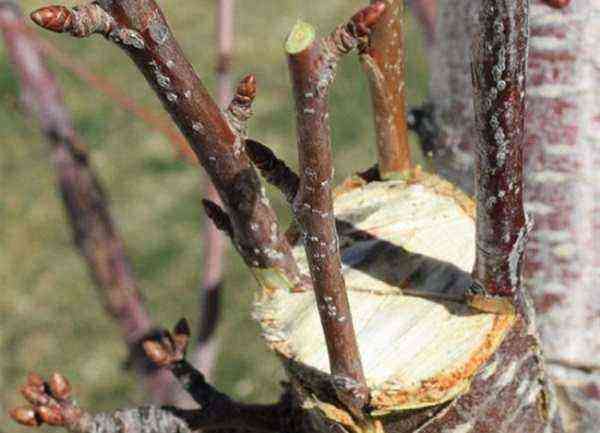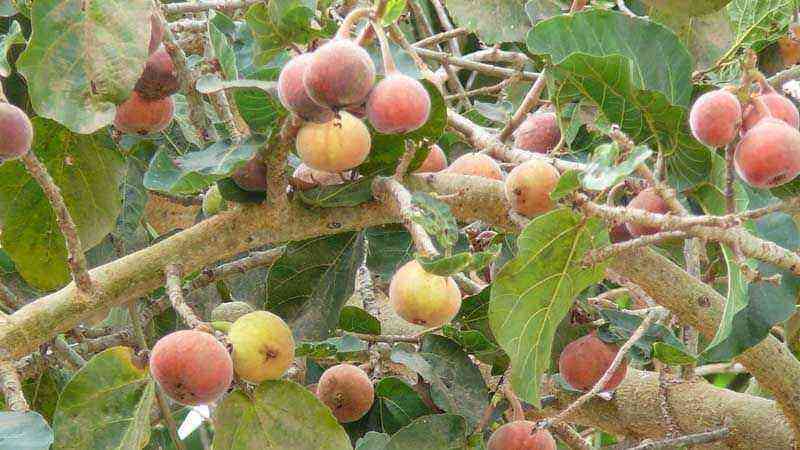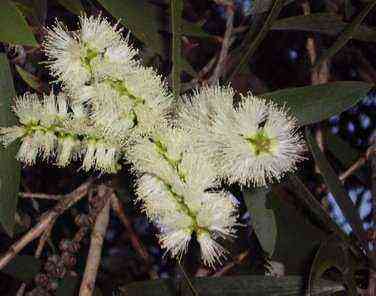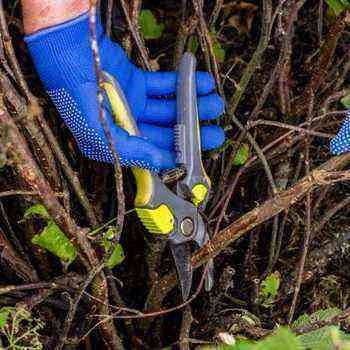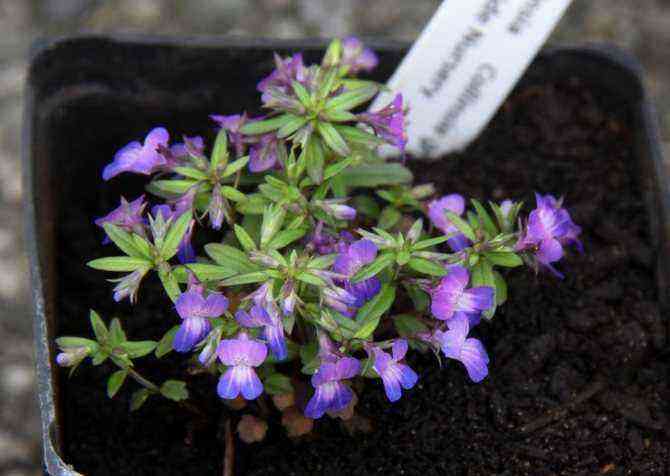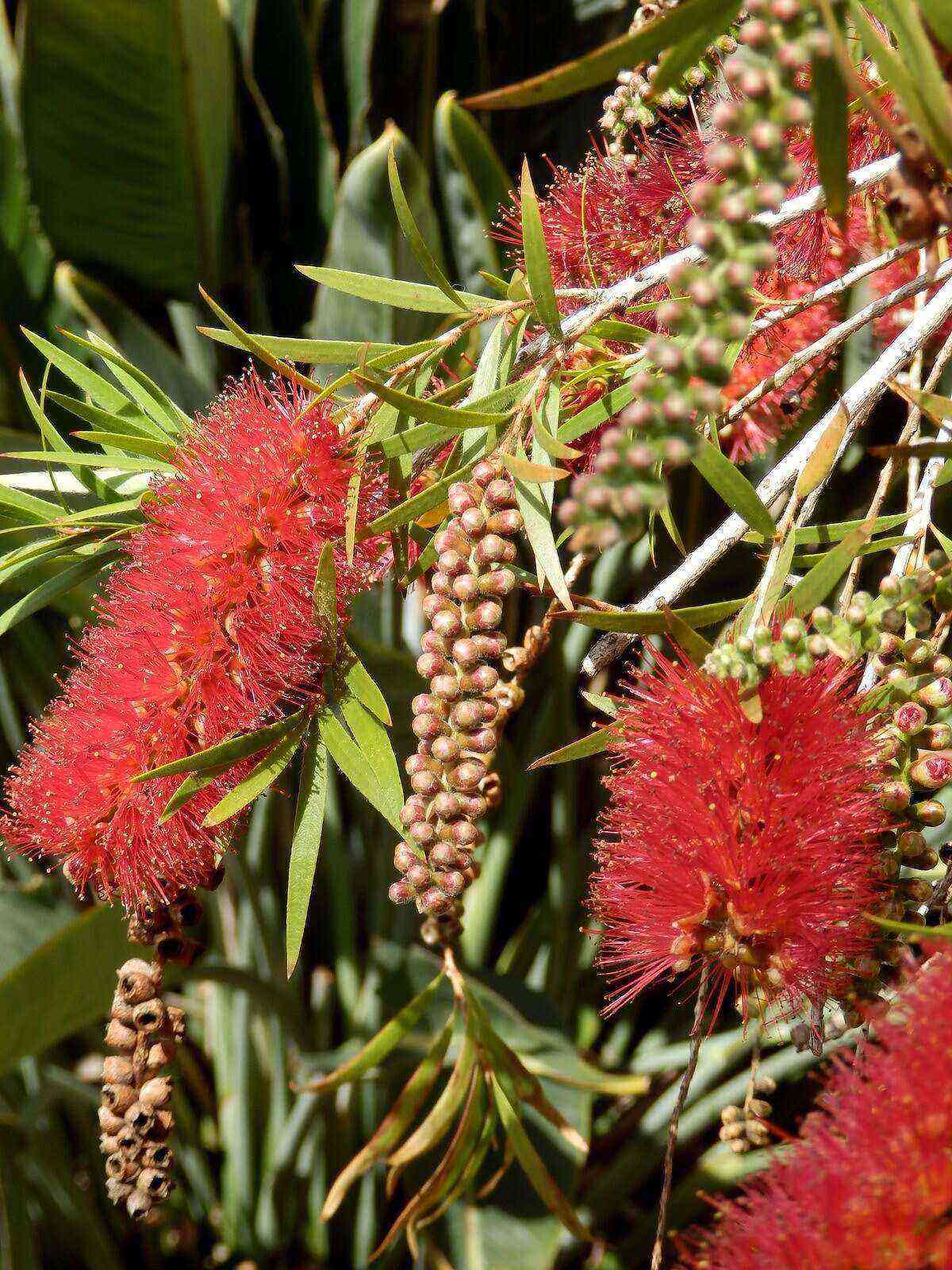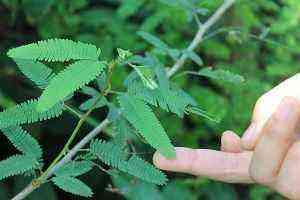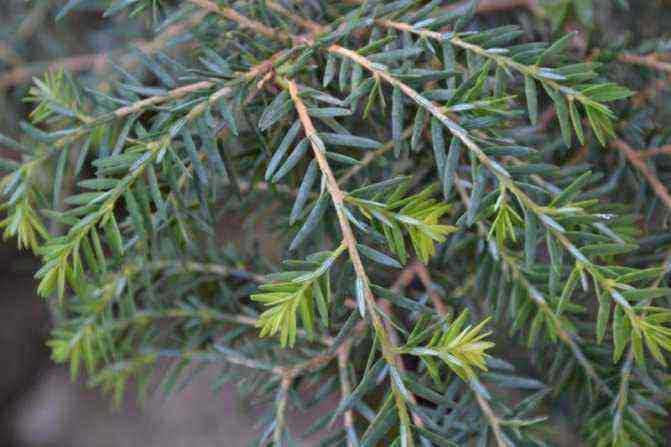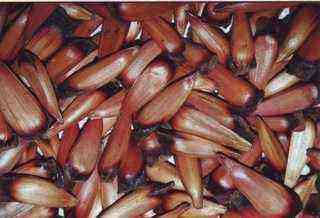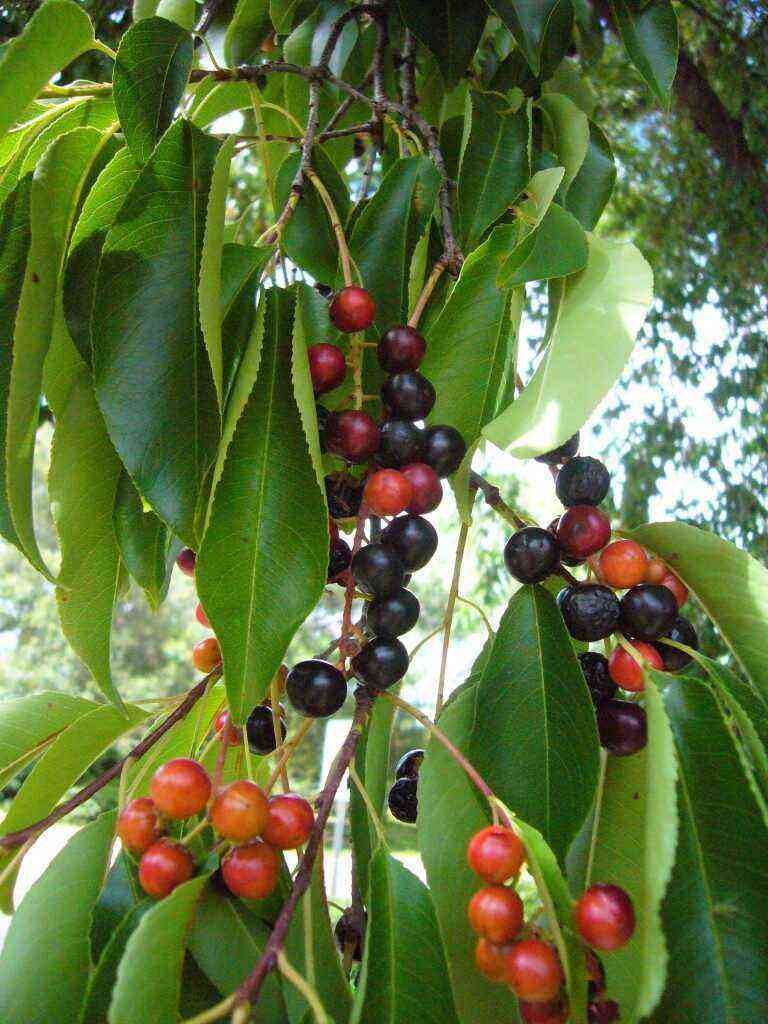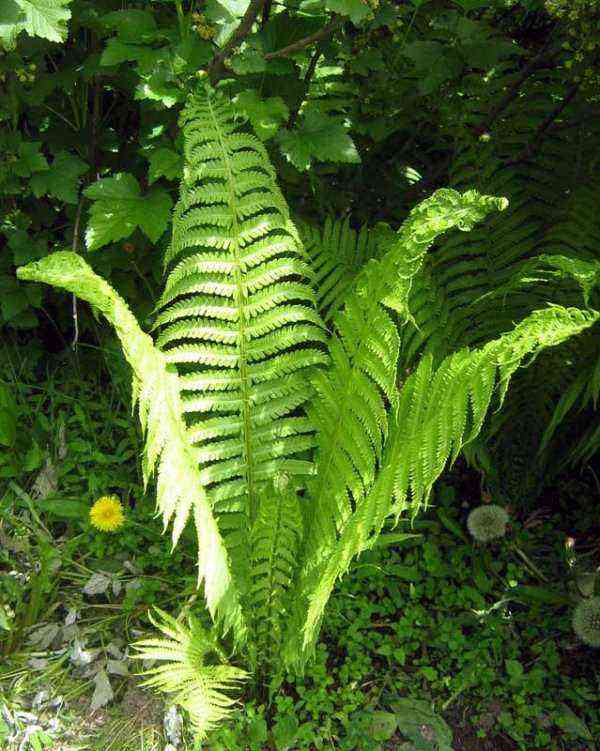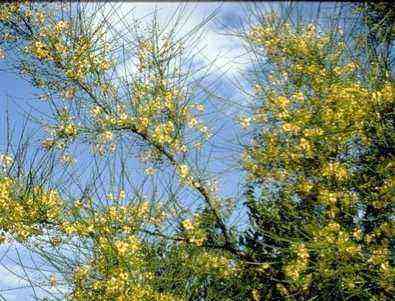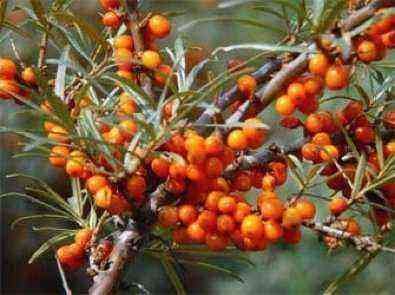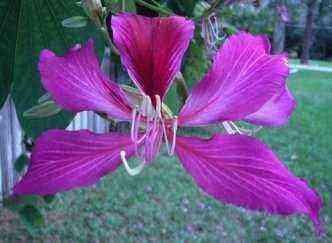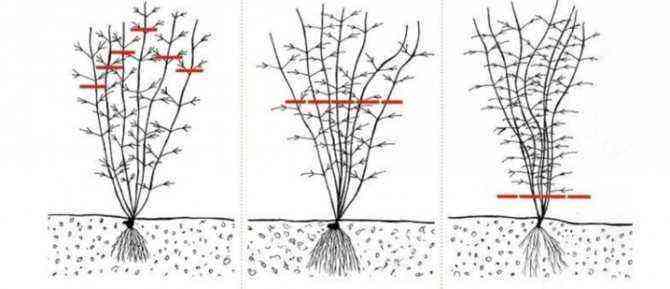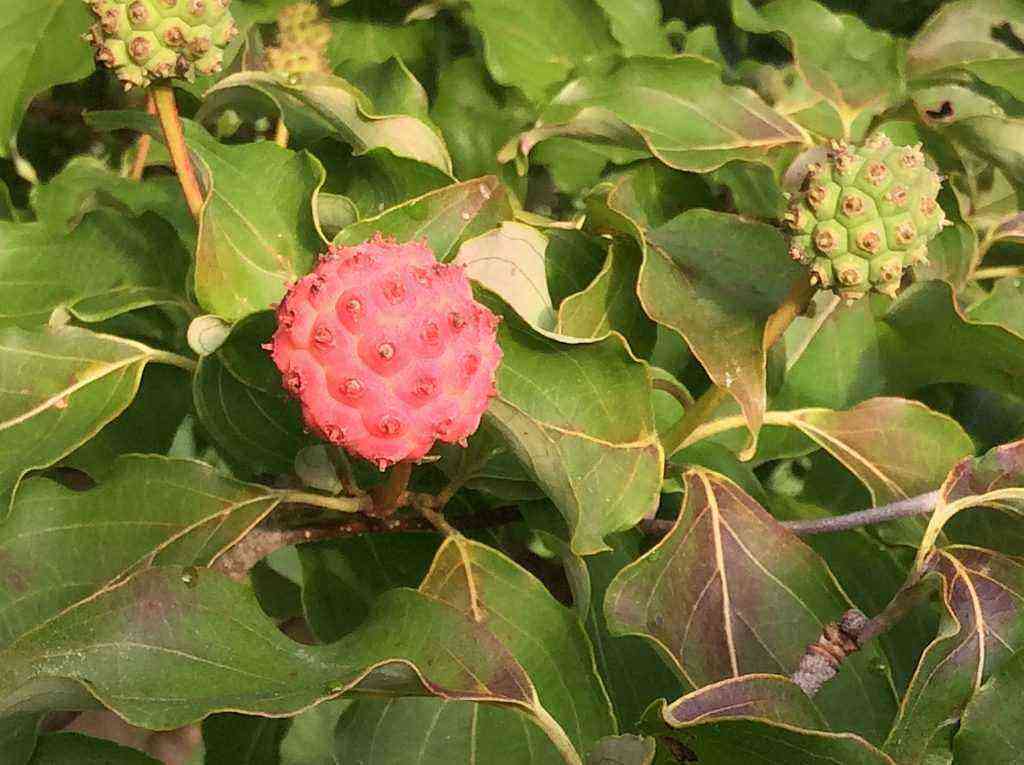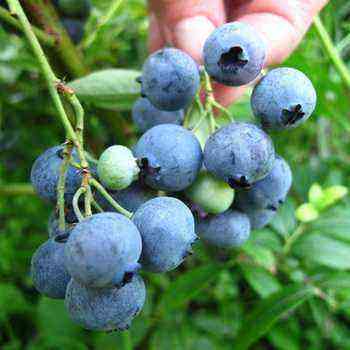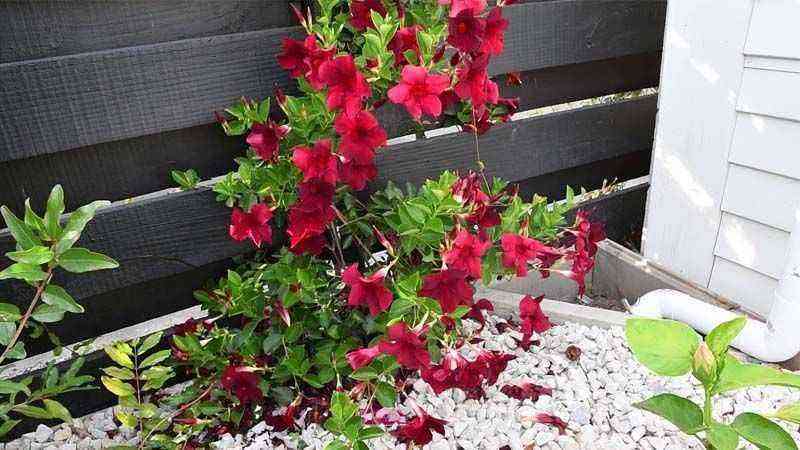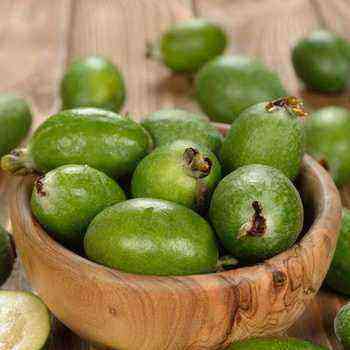Bushes and trees
0
300
Article rating
Kira Stoletova
The evergreen Vatereri mountain pine was bred by the English botanist Anthony Vaterer. This variety was grafted onto Scots pine stock and has been used for over 150 years in industrial and private horticulture. Today it is grown all over the world and is readily used in landscape design.
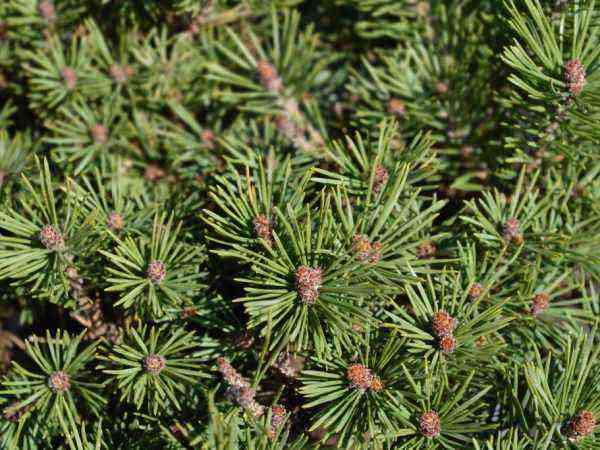
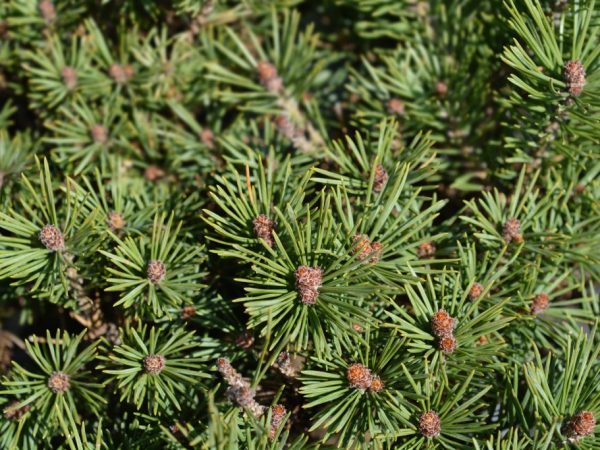
Scots pine Vatereri: varietal characteristics of the plant
Characteristics of the culture
The botanical name for the ephedra is pinus sylvestris watereri.
The tree grows slowly – the annual growth is 10-12 cm. Only by the age of 30 it reaches 3 m in height.
External Description
- The crown is wide, columnar, the circumference varies from 1,5 to 4 m, depending on age;
- The needles are prickly, collected in pairs, blue, do not change color throughout the year;
- Chestnut cones with a bluish tint, oblong;
- The trunk is often curved and covered with dark brown bark;
- Skeletal branches grow horizontally;
- Young shoots are tough and short;
- The root system is pivotal, goes deep into the ground.
Regions of cultivation
This culture is not demanding to care for, it is highly resistant to severe and prolonged frosts.
Suitable for growing in the south, center, middle lane. It is successfully cultivated in the Northern Zone, the Urals and Siberia.
Together with this product people buy
Pine plant 7 FLOWERS Mugo Pumilio H 30-40
Plant Juniper scaly 7 COLORS Blue Carpet C1 H30
Plant Juniper Virginia Blue Arrow 7 COLORS C2 H40
Working gloves SVS cotton with PVC 8 solution / 10kl / 1 pair
Plant Juniper Chinensis 7 COLORS Old Gold C1 H30
Plant Juniper Verginsky Blue Arrow 7 COLORS C7 Н100-125
GARDENA Multifunctional Spray Gun 1 pc
Decorative clip HomeAccess Antique gold leaf
Morris Green universal soil 65 l
Garden shears LUX-TOOLS Alu 393659
Seeds of Watercress Curled JOHNSONS
ERA G17 headlamp
Cleaner – spray UNIBOB multipena
Treat for cats Dreamies beef pads 60 g
Plant Spruce 7 COLORS Serbian Karel C2 H15-20
Plant Juniper scaly Squamata Holger 7 COLORS C2 Н25-30
Rules of landing
The successful cultivation of pine depends on several factors – the quality of the seedlings, the planting site, the composition of the soil and further care.
How to choose a seedling
To buy real pine with all varietal characteristics, you should go to a specialized nursery.
Choose conifers with a closed root system and 2 years of age or more. Such specimens have good endurance and almost 100% survival rate after transplantation to the site.
You can buy a plant with open roots, but they need to be planted right away or they will dry out.
When choosing, inspect the crown – it should be alive with an integral trunk, branches without cracks, injuries, breaks, growths and spots.
The needles of healthy seedlings are of a uniform blue color, do not contain yellowness, black or brown blotches, which indicates infection. Earthen lump without mold and acidification.
Site and soil preparation
The plot is suitable sunny, with shading at lunchtime, because young conifers quickly burn under the sun. Choose a place protected from the wind, with a deep passage of groundwater.
The sun can burn the needles
Vatereri prefers to grow on loamy or sandy soil with neutral acidity and high nutrient content.
If the soil is too heavy, sand and peat will help to make it looser – 1 kg of each component are added per 20 m². You can improve the structure with two buckets of clay.
If the soil is acidic, it is deoxidized with dolomite flour, slaked lime or calcite – 350 g per 1 m². After that, the bed is dug up, leveled and watered.
Landing technique
The best time to plant ephedra is late April or early May.
Over the summer, the seedlings will have time to take root, grow new roots, green mass and prepare for wintering. Autumn planting is allowed in the south, but no later than the first half of September.
- A couple of hours before planting, the underground part of the plants is saturated with moisture.
- They dig holes slightly larger than the size of the root system.
- The bottom is covered with a drainage layer (crushed stone, pebbles, broken brick or screenings). A fertile soil mixture is laid on top – the dug soil is mixed with peat, turf, sand in a ratio of 3: 2: 2: 1. Additionally, add 100 g of superphosphate and potassium sulfate.
- A lump with roots saturated with moisture is lowered, soil is poured in to fill all the voids, and tamped around the trunk.
- Then watered abundantly – for one ephedra 2 buckets of water. After the water is absorbed, mulch with a thick layer of coniferous sawdust or peat.
When planting, it is important that the root collar remains on the surface of the earth, otherwise the tree in this place will rot and die.
When planting several copies at the same time, you need to follow the scheme – 3-3,5 m between seedlings and 3 m in a row.
Healing properties
Silver dwarf Pinus not only pleases the eye with its unusual appearance and color, but also has many useful properties:
- Pine resin embalming compounds have amazing antiseptic properties.
- Anti-inflammatory, antimicrobial, expectorant, diuretic and choleretic agents are made from pine cones, buds, resin and needles.
- Decoctions from pine buds help to cure diseases of the mucous membrane in the oral cavity, gastrointestinal tract, bronchitis, dropsy.
With the help of infusion from cones, you can stop bleeding, as well as cope with a number of diseases of the heart and blood vessels. To prepare the infusion, you need to collect 150 g of green cones in the spring and fill them with vodka – 1/3 l. The resulting mixture must be placed in a dark place for a week. The present composition must be taken 3 times a day before meals, 1 tbsp. l.
How to care
The main care of the Waterreri pine tree consists of several activities.
In the first months, the tree should be sheltered from the scorching sun, otherwise it will burn out and die. To do this, use an awning, burlap or agrofibre.
Watering
It must be regular so that the root system takes root and the plant grows.
The first 60 days are moistened once a week, then the frequency is reduced to once a month. One copy consumes 20 liters of water.
Adult pines (from three years old) are watered three times per season – 50 liters per conifer.
Additionally, frequent sprinkling of the crown is needed – once every 14 days. This helps to preserve its decorative effect and avoid the appearance of parasites. The procedure is carried out in the evening to eliminate the risk of scalding the roots.
Loosening and mulching
The soil is loosened after each wetting to maintain its aeration. So the seedlings will have full access to water, oxygen and nutrients.
As it grows, weeds are removed, periodically weeding the soil between the rows.
After watering, the near-trunk zone should be mulched with a thick layer of pine chips or peat to prevent rapid evaporation of moisture.
Feeding
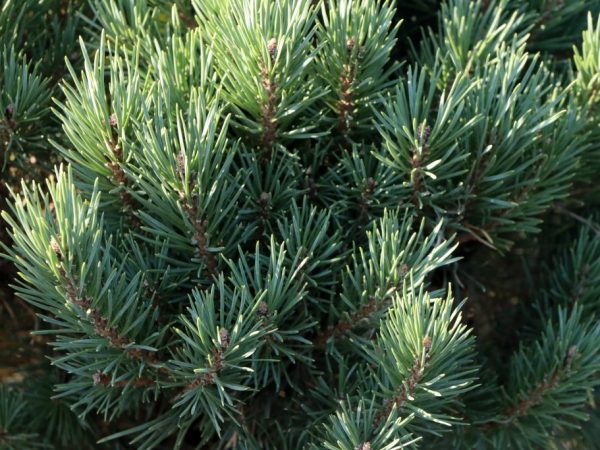

Top dressing improves the condition of the needles
Coniferous culture responds positively to nutrition with organic matter and minerals, after which it grows and develops rapidly, does not lose its decorative effect all year round.
They start feeding after three years according to the following scheme:
- in the spring, before the beginning of the growing season, 5 liters of a solution of urea or nitrophoska are poured under each plant (100 g of the substance is dissolved in 10 liters of water);
- in the first half of July, you can shed a complex of superphosphate and potassium sulfate – 80 g per bucket of water, consumption – 5 liters per tree;
- additionally, pines are fed in the fall to increase their frost resistance and disease resistance, use the same composition as in summer.
In addition to feeding under the root, you can carry out 3-4 foliar top dressing with drugs in a chelated form. Sprinkle with Epin or Epin-extra in the evening when the sun goes down.
Trimming
In May, the pine forms a large number of young shoots from last year’s buds.
At this time, pruning is carried out: the shoots of the current year are cut out, or, as they are also called, resinous twigs. In the process, you can give any shape – bonsai, cube or umbrella.
You can not touch the needles themselves, because the plant will receive severe stress and may not survive it.
In parallel with the formation, they remove frozen, damaged by diseases, winds and dried branches. Shoots are also cut into the ring, thickening the crown or growing in the wrong direction.
All cut off places are irrigated with a solution of copper sulfate to prevent infection. An hour later, they are sprayed with Epin, which helps the plant recover faster.
Preparation for winter
At a young age, the Vatereri variety needs good insulation, especially in regions with variable weather and long, harsh winters.
3-4 weeks before the onset of the first frost, the plant is spud, the branches are bent to the central conductor, tied with twine. Cover with spruce branches or burlap on top.
The insulation material is removed in the spring, when the snow thaws and frosts pass.
For adult pines (from three years old), shelter is not needed, the only thing that can be done is to sprinkle the near-trunk zone with peat.
Crown formation
Pine pruning, as a rule, is carried out in May, when the buds that were laid a year ago are growing rapidly and actively. Young shoots are formed from them, which are called “candles”. Usually attention is paid to resinous “candles” – shoots on which there are unopened needles.
Carrying out this procedure regularly, you can grow the most unpromising seedlings with fluffy and compact trees. By shortening young shoots, you can give the pine any shape the owner desires. Trimming must be done before the “candles” open completely.
When forming the crown, some shoots are removed completely, while others are only slightly shortened. You can achieve the original shape due to the different levels of shoots. But do not get carried away: pruning too much can slow down the growth of the tree.
Vatereri Pine is ideal for the formation of niwaki or bonsai trees, as well as various original geometric shapes (ball or cube). When pruning a tree, be careful not to damage the needles. Needles must not be shortened, only resinous “candles”.
Reproduction
This variety reproduces well by cuttings – the survival rate is almost 100%.
Shoots up to 20 cm long are cut from the top of the crown. For successful rooting, cut off with a piece of old bark. They are freed from the needles at the bottom, then dipped in Epin’s solution for half an hour.

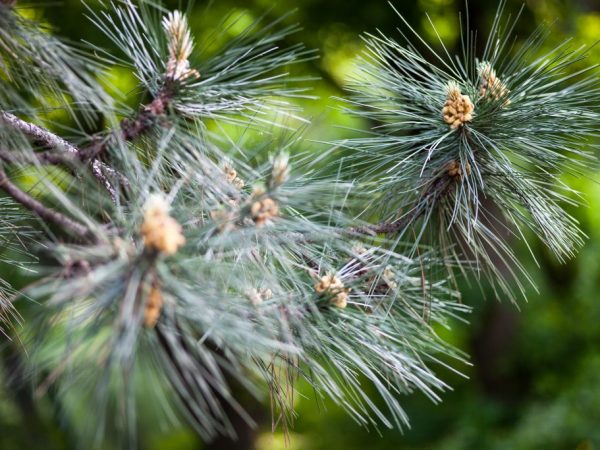
The tree propagates successfully by cuttings
They are planted in a spacious container with drainage holes filled with a mixture of peat and sand. The maximum seeding depth of cuttings is 4 cm, the angle of inclination is 45 ° С. The plantings are watered, covered with foil, placed in a lighted place and kept at a temperature of 20-22 ° C.
The care lasts 2 months until the cuttings release new buds. It consists in daily ventilation, irrigation and loosening of the soil.
After the appearance of the eyes, the shelter is removed, the container with conifers is transferred to a cool room with a temperature of 17-19 ° C.
You can transplant to the site after 1,5 years of home cultivation. During this time, the seedlings will have time to grow roots and grow green mass.
Description
Scots pine Vatereri, Pinus Sylvestris Watereri is a dwarf plant species. The world met her about a century and a half ago thanks to the efforts of the English botanist who discovered the variety, Anthony Vaterer.
Adult representatives of the variety grow no higher than 3-4 meters. Young trees are distinguished by a bushy, wide, spherical crown, and old ones are less lush, but still picturesque. If you look at Vatereri from the side, the tree looks like an open umbrella.
The Vatereri pine is slow-growing; over the course of a year it gains 10 – 12 cm in height and width. The needles are tough. The length of the needles growing in pairs, collected in bunches, is 4 cm. The needles are often twisted so that they look iridescent, grayish-blue and greenish.
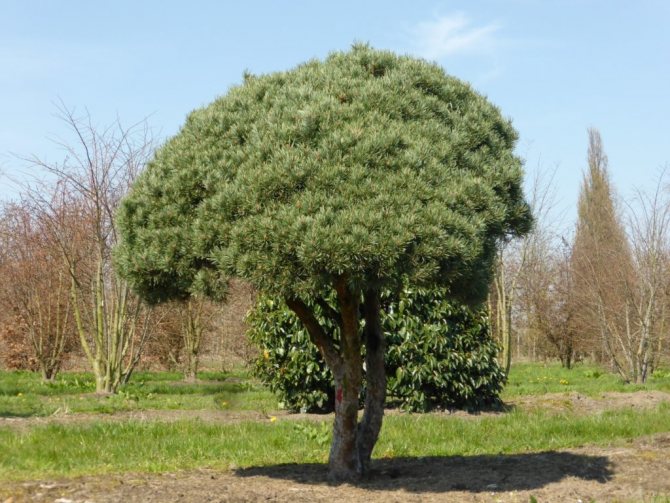

The cones of this tree are conical. Male and female have a different appearance:
- Male cones range in color from yellow to light pink. Their size varies from 8 mm to 1,3 cm.
- Female cones differ in that they can grow in one or the same groups. They are much larger in size, their length is 3 – 7 cm.
The color of the buds depends on what stage of maturity they are in, ranging from matte and light brown to green. Their ripening period is the end of November – December. The cones begin to open in February, and closer to April they hardly remain on the tree – the cones fall off.
Pine Vatereri is a frost-resistant plant, undemanding to the composition of the soil. However, wood does not tolerate air pollution.
Diseases and treatment
This ephedra has two sores that appear when the rules of care and disembarkation are violated.
Rust
Fungal infection develops in thickened plantings, with frequent overflow of the root system.
Signs of damage are the appearance of reddish or brown growths on the surface of the trunk, skeletal branches. The infected parts die off, and with them the needles turn yellow and crumble.
You can save a sick pine tree if you remove and burn all the affected areas, then treat the crown with Rilomil gold, Hom or a solution of copper sulfate.
Brown shute
Another dangerous disease caused by a fungus is not cured at an advanced stage.
Usually, the infection appears at the beginning of summer – at first they turn yellow, then the shoots and needles turn brown, and later they crumble. Closer to autumn, the entire ephedra becomes covered with black dots.
All damaged tissues and organs are cut out, fallen needles and branches are collected, the crown and soil are irrigated with Bordeaux liquid or copper sulfate. Severely affected specimens must be dug up and burned.
Plants – pine antagonists
There are horticultural crops that do not tolerate pine trees. When planting them side by side, the plants will begin a species control, as a result, one of the seedlings will have to be planted so that it does not disappear.
The most categorical in this regard are:
- Birch;
- bird cherry;
- other deciduous trees;
- do not grow near pine trees and roses.
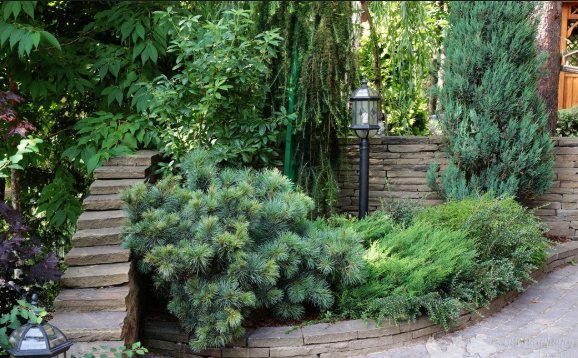

Pine and juniper, forsythia, magnolia, spirea get along well with each other
When creating green compositions, the compatibility factor should be taken into account. Otherwise, Vatereri is completely unassuming and will feel great anywhere.
For this reason, conifers are perfect for creating landscape compositions of any complexity. In addition, they meet not only aesthetic needs, but also serve more practical purposes – pine purifies and disinfects the air, filling it with freshness and a delicate aroma of needles.
Reviews
Scots pine Vatereri is a favorite among gardeners.
The tree is not afraid of gas pollution, does not need shaping and perfectly tolerates the most severe frosts – this allows it to be planted and grown anywhere on the site and in all regions of our country.
The high survival rate of cuttings after planting makes it possible to grow a large number of new seedlings.
The culture gets along well with all the vegetation in the garden, so its use in landscape design is especially popular.
Features of application in landscape design
To create an aesthetically correct and harmonious composition on a personal plot, many gardeners use a dwarf Pinus… This amazing coniferous plant looks amazing both in a single planting and inside a large composition.
Landing pines vatereri has many benefits for the garden:
- Absorbs street noise and dust
- Restrains gusts of wind
- Has a beneficial effect on the microclimate of the suburban area
- Protects the area from the appearance of some pests
- Purifies the air
Pinus ordinary perfectly coexists with almost all plants. This dwarf fluffy wonder will easily get along with the following trees:
But it is worth noting that there are some trees that will slow down the growth of the pinus:
- Ale
- Bird cherry
- Fir
- Larch

